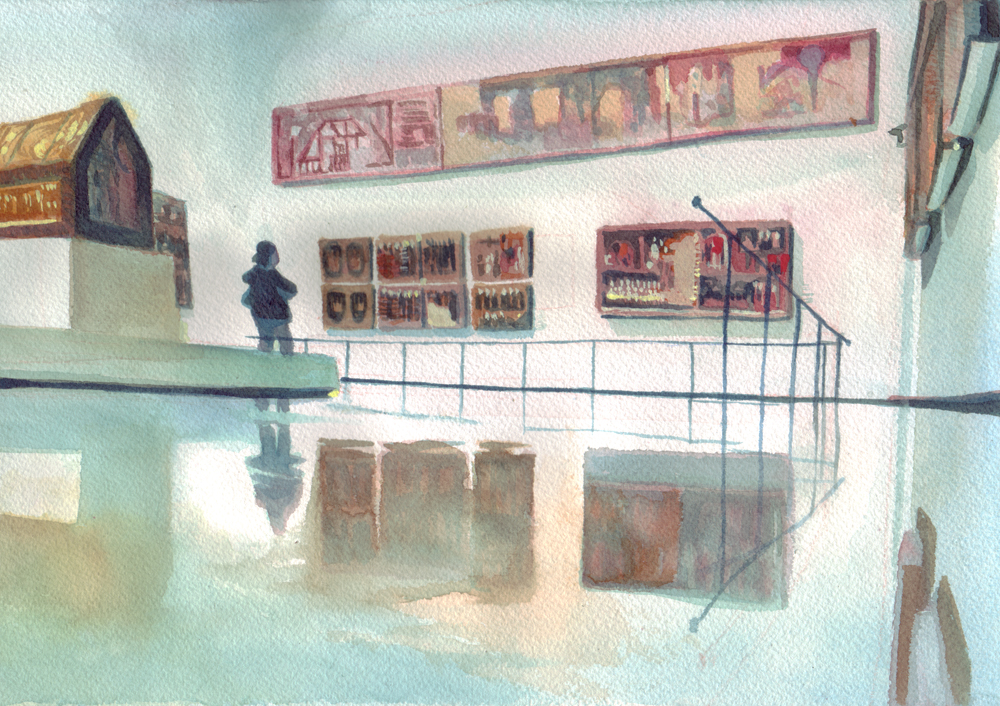The museum has jointly co-published with Norma Editorial the comic, Gothic, by the writer Jorge Carrión and the artist Sagar Fornies. In this they explore the Medieval Gothic Art collection of the Museu Nacional. Jorge Carrión explains the creative process of the publication.
It’s difficult to change habits, above all if they have given you acceptable results. So, when Pepe Serra, director of the Museu Nacional, and Lluís Alabern, head of mediation and cultural programming, asked us if we would read the Medieval Gothic art collection of the Museu Nacional in the form of a comic, Sagar and I went back to meeting up on Friday mornings, as we had done some years before to interview scrap metal merchants and to follow the routes of the metal in our blessed city, that is to say, to find stories and facts, and the spaces which would become Barcelona. Los vagabundos de la chatarra (“The scrap metal tramps”), a journalistic research in comic strips.
Let’s approach the Gothic art collection
Guided by Lluis or by César Favà, conservator of the Medieval Gothic Art collection, and by ourselves, on the Fridays of various months we went to familiarise ourselves with the paintings and these fragments of lost works, and the statues and the altarpieces, until we understood their logic and imagery.
Above all those of the altarpieces, which are at the same time so near and so far from the comic. Because although they are also narrated in a similar way to cartoons, they are religious, mythological, monarchic, hierarchic, while the comic is a language which is ironical, and modern, which can’t be understood without the press and without the masses, that is, without democracy.
We soon understood that the strategy for approaching this world couldn’t be the same as the one we had followed in our first comic. Although there was a strong temptation to take the same route as the documentary of The National Gallery”, the masterpiece by Frederick Wiseman, in the same way as in “Barcelona. The scrap metal tramps” we had collected testimonies from Joe Sacco, we sensed that journalism and documentary were not the best ways to reach where we wanted to be. We would have to invent our own route.
Our working method
We started by looking for the predominant colours of each ambit of the collection, to try to capture it by means of watercolour.
This allowed us to divide the future book into four chapters. The decision generated concepts, narrative threads and materials, above all based on the idea that the museums are machines for expropriating and ordering, but also monstrous spaces where the imageries are mixed and where it is possible to trace both the layers of horror and those of love.
On renouncing journalism we renounce narration and characters (also ourselves as characters, in our dialogues).
The book became a creative essay. Not limited, therefore, to reflective or analytical discourse, but open to poetry, photography, to the screen and to dialogue with anachronism. Because it was important to create direct links between Gothic art and the icons and technologies of our time.
Trying things out, turning the book into a laboratory, has allowed us to tune into the idea of a 21st century museum. A space also open and in transformation.
Related links
Comics and the museum: an unresolved story
From vignette to vignette. Itinerary in comic book code by Modern Art













2 Comments
Hi,
a very interesting effort to tell your Gothic art by a comic publication. Please send me 2 copies of GOTICO (span. edition).
Thank you so much for your interest. You will be able to buy a copy at the Museum shop.